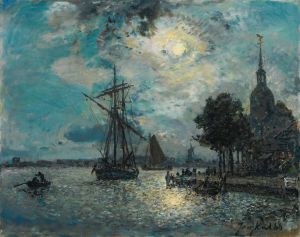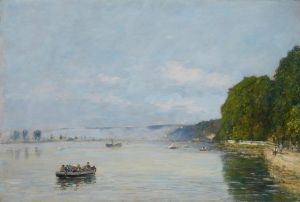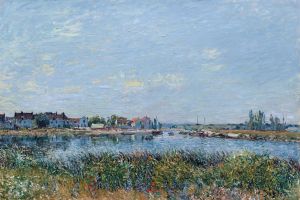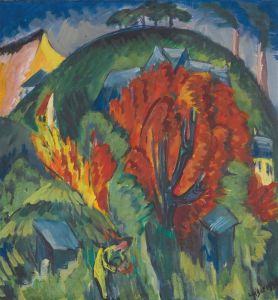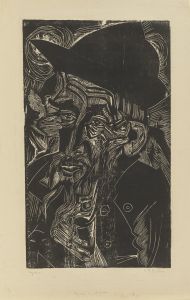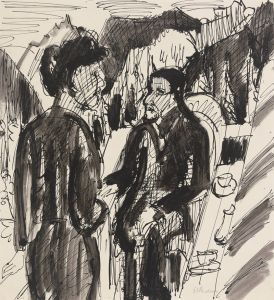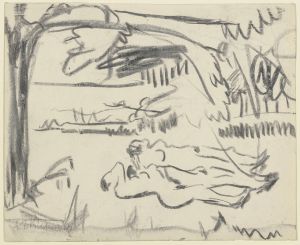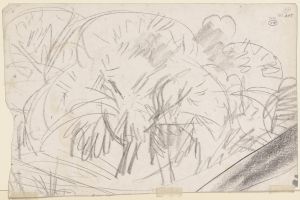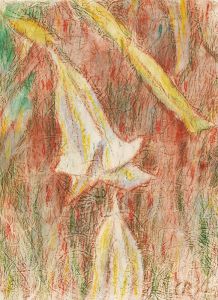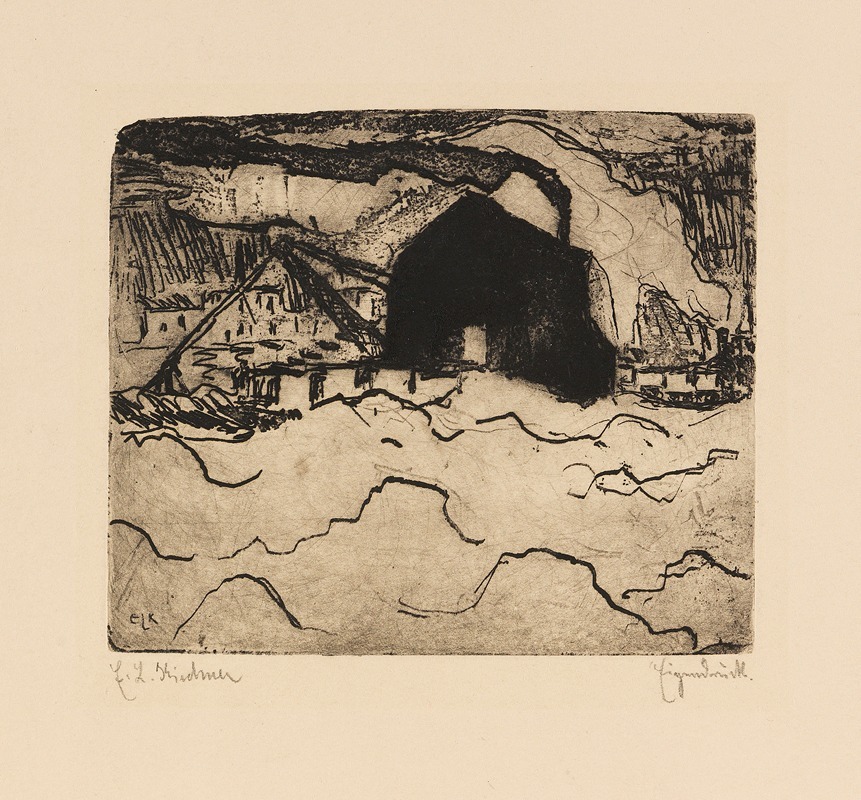
Sandbagger an der Elbe
A hand-painted replica of Ernst Ludwig Kirchner’s masterpiece Sandbagger an der Elbe, meticulously crafted by professional artists to capture the true essence of the original. Each piece is created with museum-quality canvas and rare mineral pigments, carefully painted by experienced artists with delicate brushstrokes and rich, layered colors to perfectly recreate the texture of the original artwork. Unlike machine-printed reproductions, this hand-painted version brings the painting to life, infused with the artist’s emotions and skill in every stroke. Whether for personal collection or home decoration, it instantly elevates the artistic atmosphere of any space.
Ernst Ludwig Kirchner, a prominent German expressionist painter and founding member of the art group Die Brücke, created numerous works that reflect his innovative style and deep engagement with modernist themes. Among his extensive body of work is the painting Sandbagger an der Elbe (translated as Sandbaggers on the Elbe), which exemplifies his characteristic use of bold colors, dynamic compositions, and expressive forms.
This painting depicts laborers working along the banks of the Elbe River, a major waterway in Germany. The subject matter aligns with Kirchner's frequent focus on scenes of everyday life, particularly those involving urban and rural labor. The Elbe River, which flows through Dresden, Hamburg, and other key German cities, was a significant geographical and cultural element during Kirchner's time. The workers in the painting are engaged in the physically demanding task of sandbagging, which may have been related to flood control or construction activities along the river.
Kirchner's style in Sandbagger an der Elbe reflects the hallmarks of expressionism, characterized by exaggerated forms, vibrant colors, and an emotional intensity that seeks to convey the essence of the scene rather than a realistic depiction. His brushwork and composition emphasize movement and the physicality of the laborers, capturing the energy and rhythm of their work. The painting also demonstrates Kirchner's interest in the human figure and his ability to depict it in a way that is both abstract and evocative.
The exact date of creation for Sandbagger an der Elbe is not definitively documented, but it likely falls within Kirchner's productive years in the early 20th century, a period when he was actively exploring themes of modern life and human activity. During this time, Kirchner and the other members of Die Brücke sought to break away from traditional academic art and instead embraced a more spontaneous and emotional approach to their subjects.
As with many of Kirchner's works, Sandbagger an der Elbe reflects the socio-economic realities of the time, offering a glimpse into the lives of working-class individuals. However, the painting transcends mere documentation, transforming the scene into a vivid and dynamic expression of human effort and connection to the natural environment.
Today, Ernst Ludwig Kirchner is celebrated as one of the leading figures of German expressionism, and his works are held in high regard by art historians and collectors. While specific details about the current location or ownership of Sandbagger an der Elbe are not readily available, Kirchner's paintings can be found in major museums and private collections worldwide, where they continue to inspire and captivate audiences.






